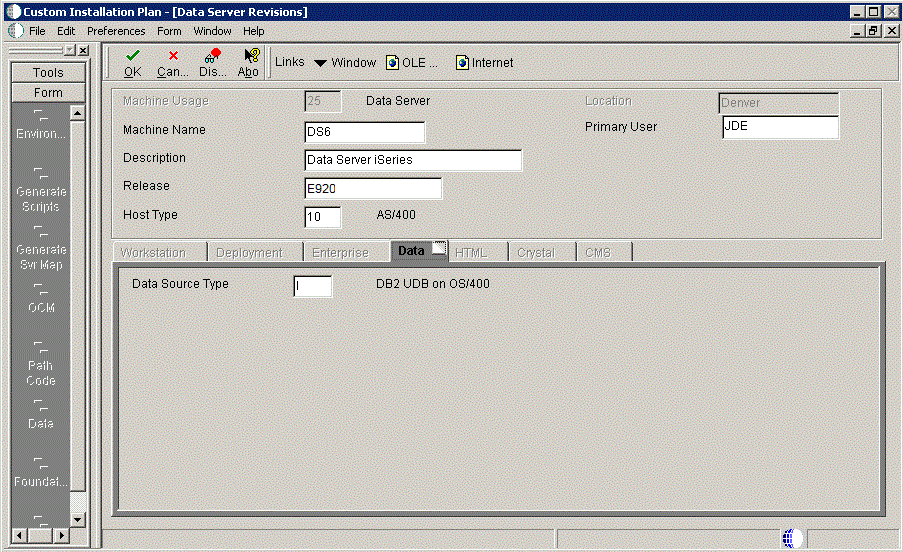Entering Data Server Information

On Data Server, choose one of these options:
OK
If your database resides on a separate server, choose click the OK button to continue entering unique Data Server information.
Select
Choose this option to select an existing Data Server.
Skip
Choose this option if you do not want to define a 6Data Server. Continue with the Planner using the environment selection in step of this task.

On Data Server Revisions, complete these fields:
Field
Description
Machine Usage
The default value of 25 indicates that this is a Database Server.
Machine Name
Enter the name of the Database Server where your central objects reside. If you are using the IBM i to store your central objects, enter the name of this server. The name is case sensitive, should not exceed 15 characters, and should not contain any special characters.
Description
Enter a description of the Database Server machine.
Release
Enter the release number you are installing, for example, E920.
Host Type
Select the type of Database Server that you are adding to the plan. Values are:
10 — IBM i
25 — Sun Solaris
30 — RS/6000
35 — Linux
50 — Microsoft Windows (Intel)
80 — Client - Microsoft Windows
90 — Client - Microsoft Windows
Location
The Installation Planner populates this field by default, based on previous selections.
Primary User
The user to whom an email is sent once a package is deployed. The default for Primary User is JDE.
On the Data tab, complete the following field:
Field
Description
Data Source Type
Choose the type of data source. For example:
I - IBM i
Click the OK button.
To add another Data Server, click the Yes button and repeat steps 1 through 4 to define another Data Server.
On Data Source, click the OK button to continue entering unique shared data source information, or click the Take Defaults button to select the default data for the shared data sources.
On Location, select the Yes button to add another location, or click the No button to continue with Installation Planner.